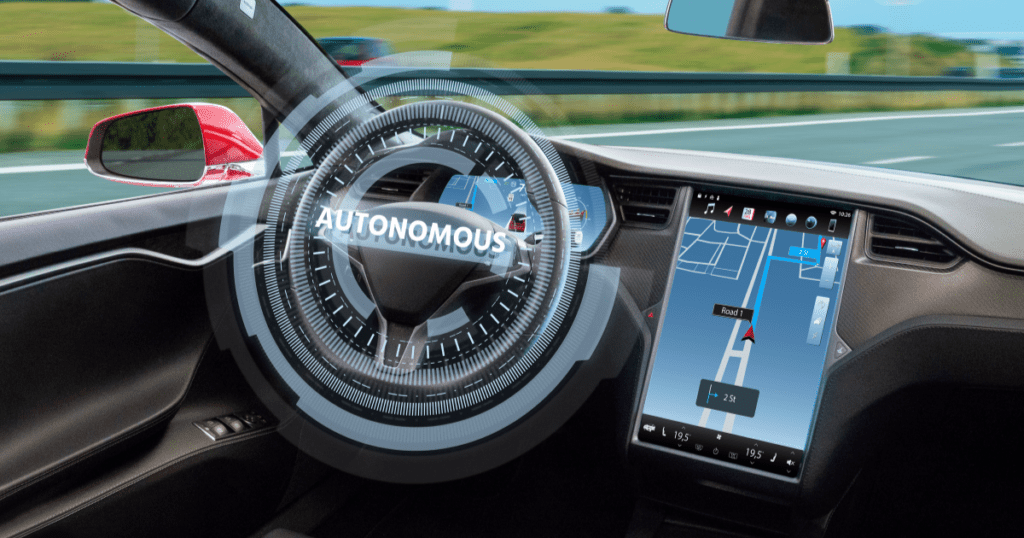As we make our way through 2023, the automotive industry continues to evolve rapidly, driven by technological advances, shifting consumer preferences, and a heightened focus on sustainability. To remain competitive in this dynamic landscape, dealers must stay informed about the latest automotive trends and developments. In this article, we will explore the top 10 auto trends for 2023 that auto dealers should keep an eye on, drawing insights from industry experts and recent reports from sources like Automotive World and Auto Service World.
10 Auto Trends for 2023
2023 is set to be a pivotal year for the auto industry. We’ve identified the top 10 automotive industry trends that will shape the market. Our discussion of each trend includes valuable insights into how auto dealers can navigate the year ahead and capitalize on these changes to grow their dealerships. Let’s dive into each of these trends below.
1. Growth of Electric Vehicles

One of the top automotive trends happing right now is the growth of electric vehicles (EVs), spurred by government mandates, consumer preferences, and environmentally conscious behaviors. Governments worldwide are setting ambitious targets for EV adoption, incentivizing consumers to switch from internal combustion engines to electric alternatives. As battery technology advances and charging infrastructure expands, range anxiety is becoming a thing of the past.
Consumers are increasingly drawn to the benefits of EV ownership, including lower operating costs, reduced emissions, and a smoother driving experience. As a result, demand for electric vehicles is rising, and automakers are responding by introducing new and improved models across various segments. Auto dealers should be prepared to meet this growing demand by expanding their EV offerings and providing knowledgeable guidance to consumers interested in making the switch.
2. Connected Cars and Digital Technology
Connected cars and digital technology are transforming the driving experience, offering enhanced safety, convenience, and entertainment options. As vehicles become more connected, drivers and passengers can enjoy seamless integration with their digital lives. From advanced infotainment systems and navigation tools to vehicle diagnostics and remote control features, connected car technology is quickly becoming an essential aspect of modern vehicles.
As vehicles become increasingly connected, auto dealers must stay informed about the latest technologies and be prepared to educate consumers on the benefits and functionalities of these systems. Dealerships can also invest in staff training to handle customers’ questions or concerns about connected car technology. In addition, dealerships with a service department should consider investing in training and tools to ensure their service departments can handle the increasing complexity of these systems.
3. Continued Work on Autonomous Vehicles

The development of autonomous vehicles continues to progress significantly, with numerous companies testing and refining their self-driving technologies. While fully autonomous cars are not yet ready for widespread deployment, advancements in recent years have brought us closer to a future where cars can navigate the roads without human intervention.
For auto dealers, it is crucial to stay up-to-date on the latest advancements in autonomous vehicle technology and understand the potential implications for the industry. As autonomous capabilities continue to improve, dealers should be prepared to adapt their business models and consider how these technologies may influence consumer preferences and expectations in the years to come.
4. Growth of Shared Mobility
Shared mobility, including car-sharing and ride-hailing services, is gaining traction as an alternative to traditional vehicle ownership. Urbanization, cost savings, and an increased focus on sustainability have driven consumers, particularly younger generations, to explore more flexible and eco-friendly transportation options. In fact, McKinsey predicts that shared mobility could generate up to $1 trillion in consumer spending by 2023.
As shared mobility grows, auto dealers must consider the potential impact on vehicle sales and explore new ways to capitalize on this trend. For example, dealers could partner with car-sharing and ride-hailing companies or offer flexible leasing options to appeal to customers who hesitate to commit to traditional vehicle ownership.
5. Automaker and Tech Company Partnerships

Automakers are increasingly partnering with technology companies to develop cutting-edge solutions for connectivity, electrification, and autonomy to keep up with the rapid pace of innovation. These collaborations enable automakers to leverage the expertise and resources of tech giants while technology companies gain a foothold in the lucrative automotive market.
Auto dealers should be aware of these partnerships and understand how they may shape the industry’s future. Dealerships may need to adapt their sales strategies and product offerings to account for the influence of tech companies on vehicle design and functionality.
6. New Car Prices: High but Dropping
High prices for new vehicles have persisted due to supply chain constraints and higher production costs. However, as supply chain issues begin to ease and production catches up with demand, experts anticipate that prices will drop this year.
Dealers should monitor the pricing landscape and adjust their strategies accordingly, ensuring they remain competitive. As prices drop, dealerships should be prepared to capitalize on increased consumer interest and demand for new vehicles.
7. Used Cars: Prices Dropping, but Interest Rate Will Depress Demand

The downward trend in used car prices, driven by increased supply and stabilizing market conditions, is overshadowed by the negative effects of high auto loan interest rates. According to a recent report from Money.com, as the Federal Reserve plans further interest rate hikes throughout the year, the affordability of used vehicles may be significantly impacted, potentially suppressing demand even further.
Auto dealers should be prepared for the potential impact of these interest rate hikes on their used vehicle sales and adjust their strategies accordingly. To mitigate the effects of rising interest rates, dealers can explore offering more competitive financing options, such as longer loan terms to bring payments down or alternative financing solutions. By providing more attractive financing options and guidance, dealers can help customers overcome the challenges of higher interest rates and maintain demand for used vehicles in this changing economic landscape.
8. Changing Sales Experience
Car buying is evolving as consumers increasingly turn to online tools and virtual showrooms to research and compare vehicles before visiting a dealership. This shift towards digital platforms is driven by technological advancements and changing consumer expectations for a more convenient and transparent buying experience.
Auto dealers should adapt to these changing preferences by investing in user-friendly online platforms, virtual showrooms, and digital marketing strategies. By providing an engaging and seamless online experience, dealers can attract more customers and streamline the sales process.
9. Increased Demand for Aftermarket Accessories
As consumers seek to personalize and enhance their vehicles, the demand for aftermarket accessories is rising. Customers increasingly look for ways to customize their cars to suit their preferences and lifestyles, from performance upgrades to aesthetic modifications.
Auto dealers can capitalize on this trend by offering a range of aftermarket accessories and services. Through upselling and cross-selling opportunities, dealerships can create additional revenue streams.
10. Automakers Experiment with Subscription Plans

Automakers are now exploring subscription-based services to offer customers enhanced features and functionality on demand. Examples include BMW’s subscription service for heated seats and steering wheels, General Motors and Ford’s subscriptions for advanced hands-free driver-assist systems (Super Cruise and BlueCruise, respectively), and Mercedes-Benz’s subscription plan for extra performance of the EQE and EQS electric vehicles. However, so far, consumers have not received these subscription services well. For example, The Verge has declared, “The future of cars is a subscription nightmare” and refers to auto subscriptions as a ‘troubling trend.’
Auto dealers should approach this trend with caution and be transparent with customers about the costs and benefits of these subscription services. Dealers must listen to consumer concerns and be prepared to address any apprehensions about paying for additional features through subscriptions. By proactively discussing the subscriptions and providing clear explanations of what is included, dealers can manage customer expectations and maintain trust while capitalizing on the potential revenue opportunities presented by these services.
Stay Informed about Automotive Industry Trends
In conclusion, the automotive industry is undergoing significant changes driven by technological advancements, shifting consumer preferences, and environmental concerns. Auto dealers must stay informed about the latest automotive trends and developments to remain competitive in this dynamic landscape.
The top 10 auto trends for 2023 highlighted in this article provide valuable insights into how dealerships can navigate the year ahead and capitalize on these changes to grow their dealerships. Auto dealers should contemplate how these trends will impact their business and be prepared to adapt their strategies accordingly. By staying up-to-date and proactively meeting customer needs, dealerships can capitalize on the potential opportunities presented by these trends and maintain a competitive edge in the industry.



